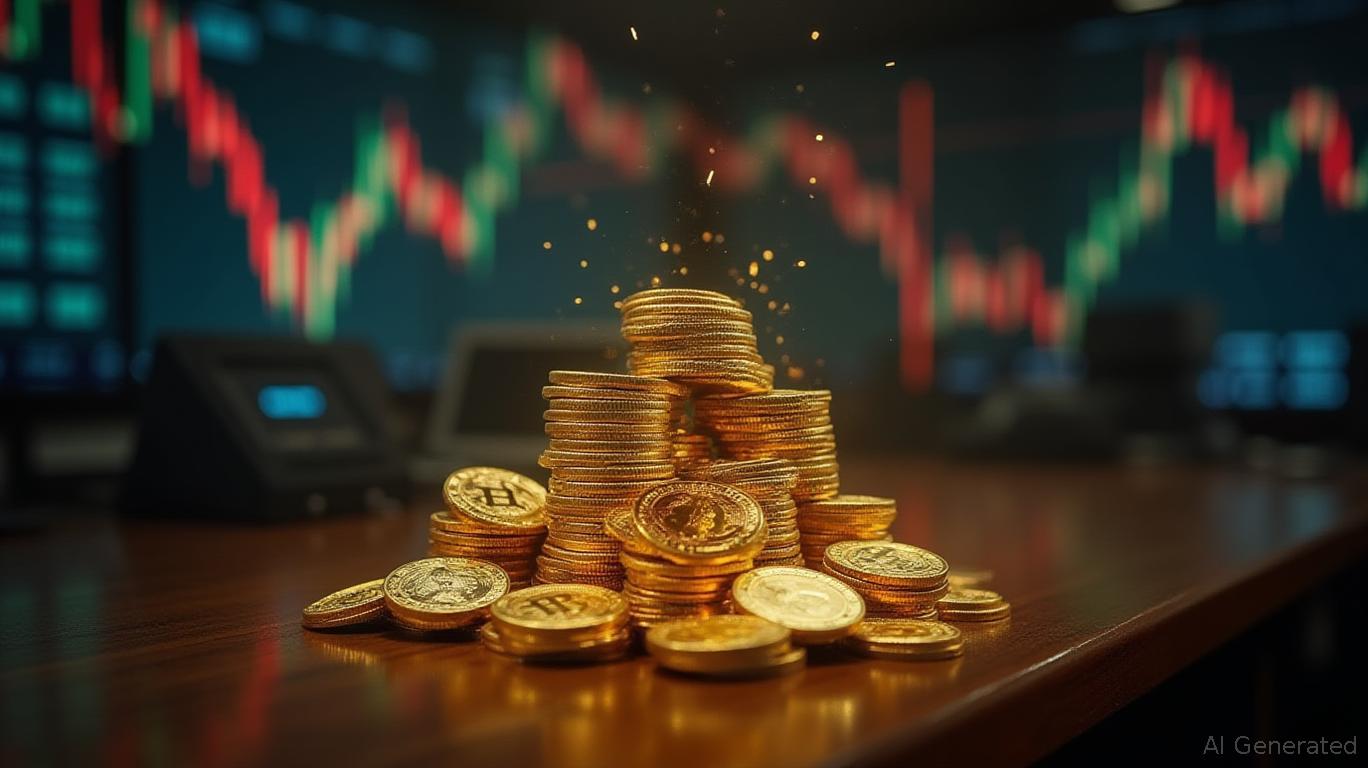Solana News Update: MoonBull Merges Meme Craze and Strategic Expansion to Compete with Industry Leaders
- MoonBull ($MOBU) outpaces BNB and SOL in 2025 crypto growth via presale strategy and community-driven mechanics. - Stage 5 presale raised $450K at $0.00006584, projecting 9,256% returns by listing price of $0.00616. - Structured tokenomics with liquidity locks, burns, and 15% referral rewards differentiate it from speculative meme coins. - Analysts compare its growth model to Ethereum, suggesting it could redefine meme coins through governance and scarcity mechanisms.
MoonBull ($MOBU) has quickly risen to prominence in the 2025 cryptocurrency scene, surpassing well-known tokens like Binance Coin ($BNB) and
Although MoonBull currently leads the market buzz, $BNB and $SOL continue to serve as foundational assets in the crypto world. Binance Coin’s role in reducing trading fees and its integration with decentralized finance (DeFi) platforms have made it a reliable, fast-growing asset, according to Coindoo. Likewise, Solana’s rapid and cost-effective blockchain remains attractive to developers and traders, with its real-time price showing ongoing demand in DeFi and NFT sectors. However, neither token offers the dramatic growth potential seen with MoonBull, which merges

MoonBull’s achievements are further strengthened by its liquidity safeguards and claimable token framework. These features, along with an 11% referral allocation ($8.05B $MOBU), have established the project as a community-centric effort, setting it apart from the speculative tendencies of typical meme coins, according to FinanceFeeds. Experts believe MoonBull’s organized strategy—similar to successful Ethereum-based projects with robust governance—could reshape the meme coin landscape by 2025, the FinanceFeeds article suggests.
On the other hand, broader industry trends reveal the dangers of relying too heavily on hype-driven tokens. For example, Ripple’s
As the crypto sector adapts to shifting macroeconomic conditions and regulatory changes, MoonBull’s mix of easy access and structured growth has drawn parallels to the early days of
Disclaimer: The content of this article solely reflects the author's opinion and does not represent the platform in any capacity. This article is not intended to serve as a reference for making investment decisions.
You may also like
Bitcoin Latest Updates: Investors Shift Away from Gold Amid Improved Trade Relations, Risk Appetite Rises While Bitcoin ETFs Lag Behind
- Gold fell below $4,000 as U.S.-China trade tensions eased, reducing demand for safe-haven assets after a framework agreement in Malaysia. - Bitcoin dropped 3.5% to $108,000 but rebounded near $115,000, while ETF inflows lagged behind gold's outflows amid divergent investor behavior. - JPMorgan forecasts gold to average $5,055 by 2026, while Bitcoin's ETF inflows and ETF market momentum show uneven growth despite regulatory challenges. - Technical analysis shows gold's bearish RSI and Bitcoin's $115,000 s

Breaking Down Barriers in Blockchain: Brevis Handles 130 Million zk Proofs Each Month
- Brevis, a Web3 platform, processes 130M monthly zero-knowledge proofs via its zk coprocessor network, addressing blockchain scalability and interoperability challenges. - Its architecture offloads computation off-chain while verifying on-chain, reducing gas costs and enabling cross-ecosystem trustless logic through "chain fence" elimination. - With 97K+ users, 30+ global partners, and optimized parallel processing, Brevis aims to establish a foundational zk data layer for real-time smart contract verific

AI's Dilemma in Education: Revolutionizing Learning or Widening Gaps?

Tech Industry Relieved as U.S.-China Agreement Temporarily Halts Rare Earth Export Restrictions
- U.S. and China agree to a one-year trade framework suspending key tariffs and rare earth export controls to ease tensions. - The deal avoids a 100% U.S. tariff on Chinese goods and delays China's rare earth restrictions critical to tech and defense sectors. - China resumes soybean purchases, benefiting U.S. farmers, while U.S. reduces fentanyl-related tariffs from 20% to 10%. - Success hinges on China's enforcement of rare earth policies and U.S. adherence to export controls, per analysts.
